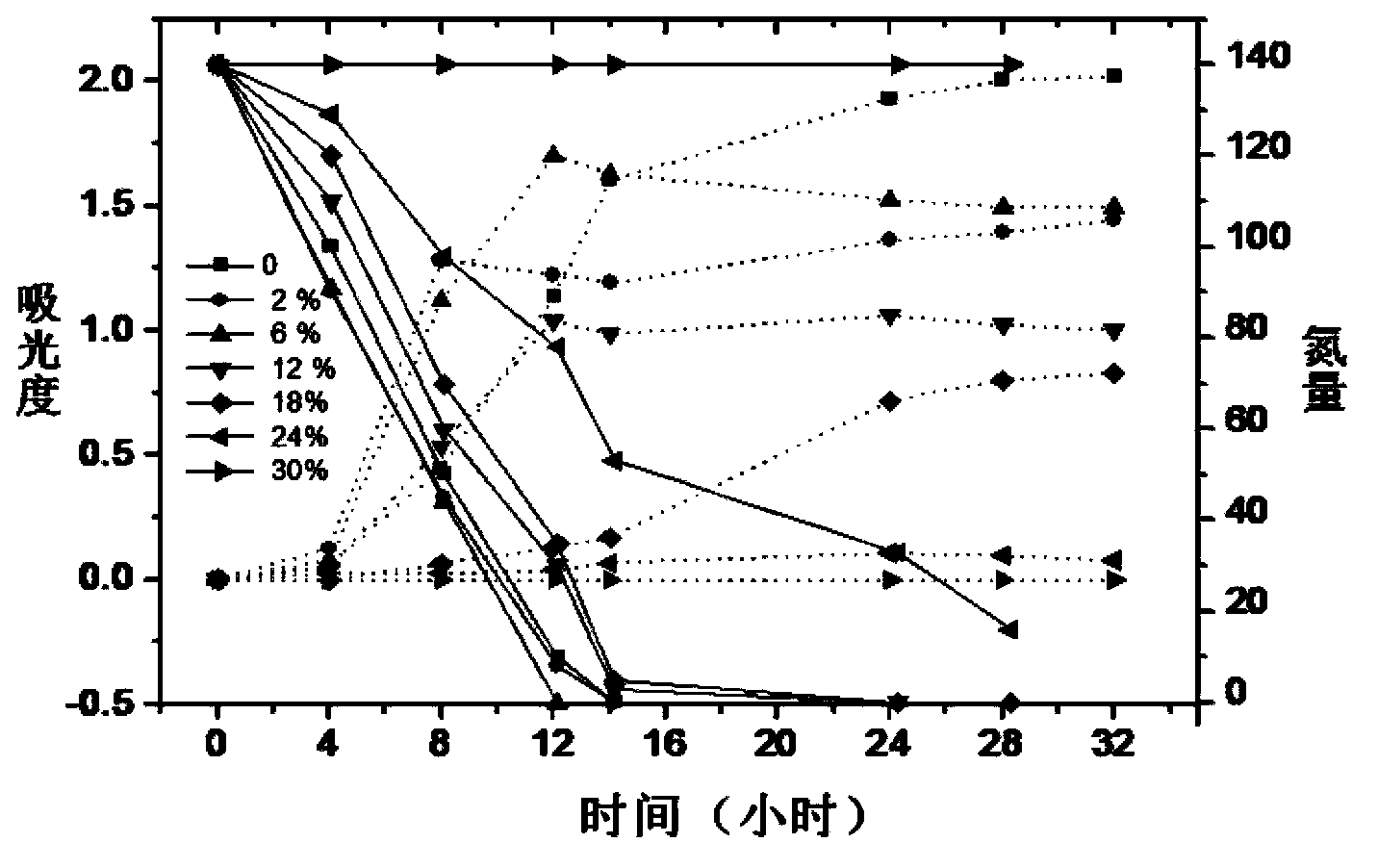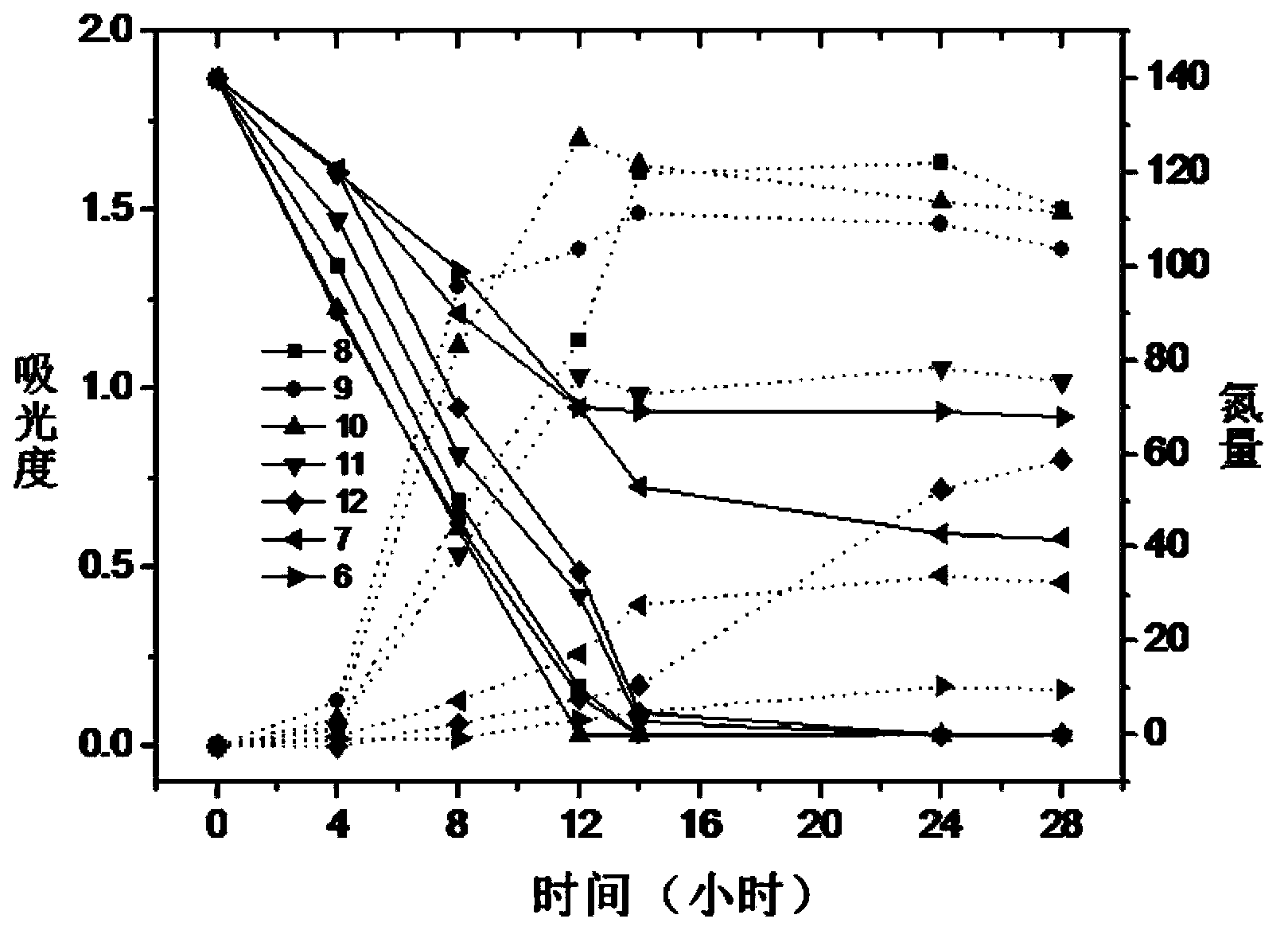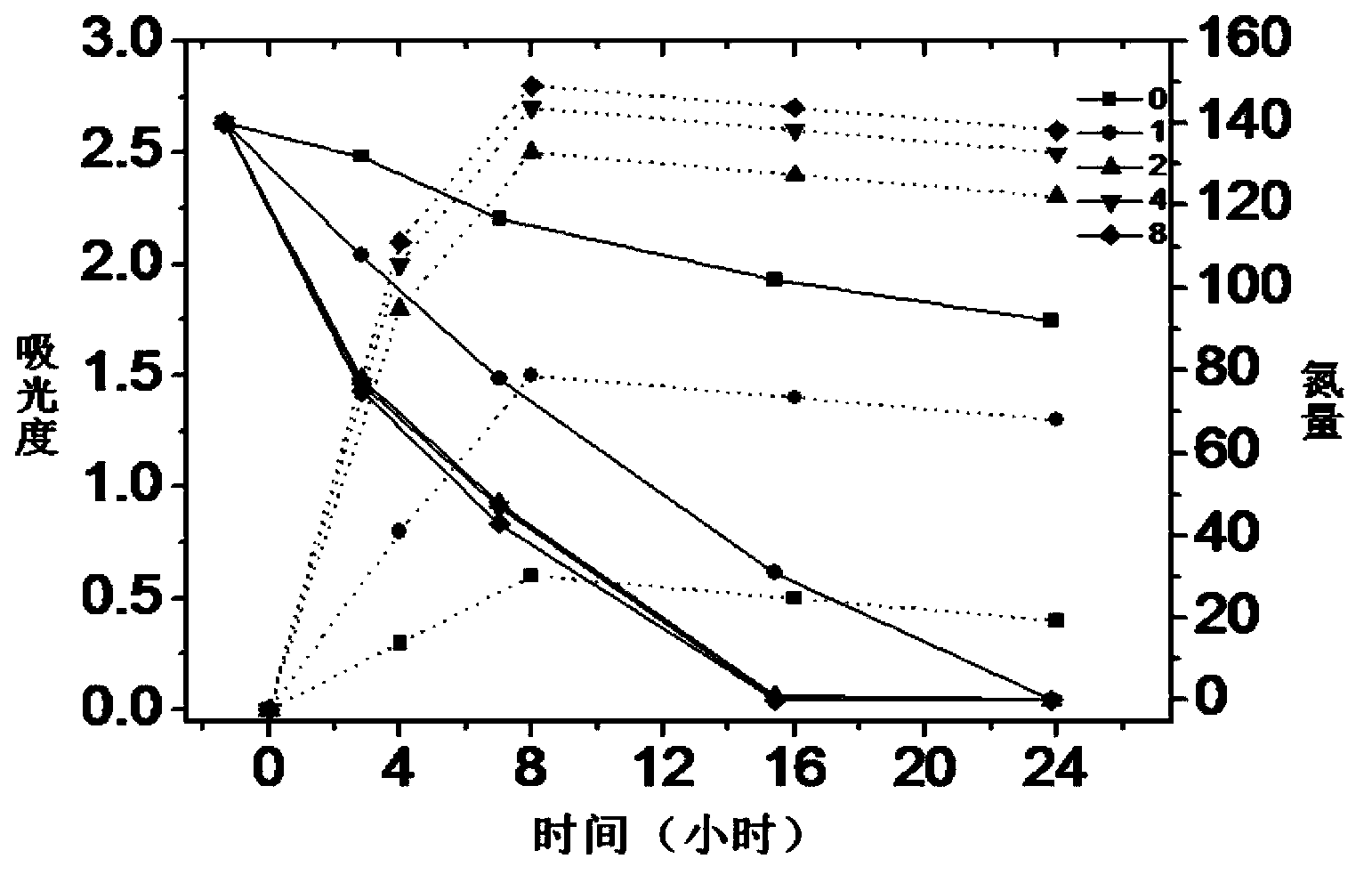Halomonas campisalis with heterotrophic nitrification aerobic denitrification function and application thereof
An aerobic denitrification and halomonas technology, which is applied in the field of microorganisms to achieve the effects of shortening the startup time, increasing the growth rate, and having a high extreme value.
- Summary
- Abstract
- Description
- Claims
- Application Information
AI Technical Summary
Problems solved by technology
Method used
Image
Examples
Embodiment 1
[0056] Example 1 Screening of Heterotrophic Nitrification and Aerobic Denitrification Strains
[0057] 1. Divide 10mL of the mud sample taken from Ordos Saline-Alkali Lake (1150m above sea level, 109.73° east longitude, 39.57° north latitude) in three parts into 250mL triangular flasks, which contained 100mL screening medium (formulation g / L: C 4 h 4 Na 2 o 4 ·6H 2 O 4.73, NaNO 3 0.85, NaCl 60, yeast extract 1, NH 4 SO 4 0.19, KH 2 PO 4 1.36, 5mL trace elements (g / L:Na 2 EDTA 63.7; MnCl 2 4H 2 05·06; FeSO 4 ·7H 2 O 5.022; CaCl 2 5.5; Na 2 MoO 4 4H 2 O 1.1; CuSO 4 ·5H 2 O 1.57; CoCl 2 ·6H 2 O 1.61; PH=7.00), adjust the pH to 7.5 with NaOH, seal with parafilm and sterilize under high pressure steam at 121°C for 20min). Then culture at 30°C and 180rpm for 48 hours, measure the pH value and OD value in the three bottles, and observe the number of bubbles in the medium, select the one with increased pH, high OD value and more bubbles to carry out subculture e...
Embodiment 2
[0059] The bacterial strain screened in Example 2 carried out 16S rDNA sequence analysis
[0060] The total DNA of the obtained strains was extracted, and then the genes were amplified and sequenced using 16S rDNA primers, and the sequencing results were submitted to Genbank for Blast comparison for homology analysis.
[0061] 16S rDNA gene amplification and PCR product analysis template preparation: the obtained pure strains were inoculated in the screening medium and cultured for 24 hours, the culture solution was collected by centrifugation to collect the precipitate, and the genome extraction kit was used (for the genome DNA extraction method, please refer to "Bacterial Molecular Genetics Classification and identification method" (Shanghai Science and Technology Press, 1990)) extract the total DNA of the bacteria, the fragment size is about 20kbp, the design of the 16S rDNA gene primer uses the general primer 27f / 1492r, provided by Guangzhou Huada Gene Company. The PCR rea...
Embodiment 3
[0067] Example 3 Aerobic denitrification and growth curves of Halomonas campisalis.BMEN3 at different salinities
[0068] Prepare denitration medium with NaCl concentration of 0, 2%, 6%, 12%, 18%, 24%, and 30% (less yeast powder compared with screening medium), pH 9, inject 100mL into a 250mL Erlenmeyer flask, Each concentration was repeated three times, sterilized at 121°C for 20 minutes, and then inoculated with 10% (take 10mL and centrifuge and wash three times with the culture medium) for small culture at 37°C and 180rpm, and sampled once every 4 hours, with three repetitions each time. Take a sample and measure the OD of the sample with a spectrophotometer 600 value, using ion chromatography (ICS-900, Dionex) to detect NO 3 - and NO 2 - concentration, the result is as figure 1 .
[0069] from figure 1 It can be seen that Halomonas campisalis.BMEN3 can grow at a salinity of 0-24%. From the growth curve and denitrification curve, it can be seen that the optimum growt...
PUM
 Login to View More
Login to View More Abstract
Description
Claims
Application Information
 Login to View More
Login to View More - R&D
- Intellectual Property
- Life Sciences
- Materials
- Tech Scout
- Unparalleled Data Quality
- Higher Quality Content
- 60% Fewer Hallucinations
Browse by: Latest US Patents, China's latest patents, Technical Efficacy Thesaurus, Application Domain, Technology Topic, Popular Technical Reports.
© 2025 PatSnap. All rights reserved.Legal|Privacy policy|Modern Slavery Act Transparency Statement|Sitemap|About US| Contact US: help@patsnap.com



